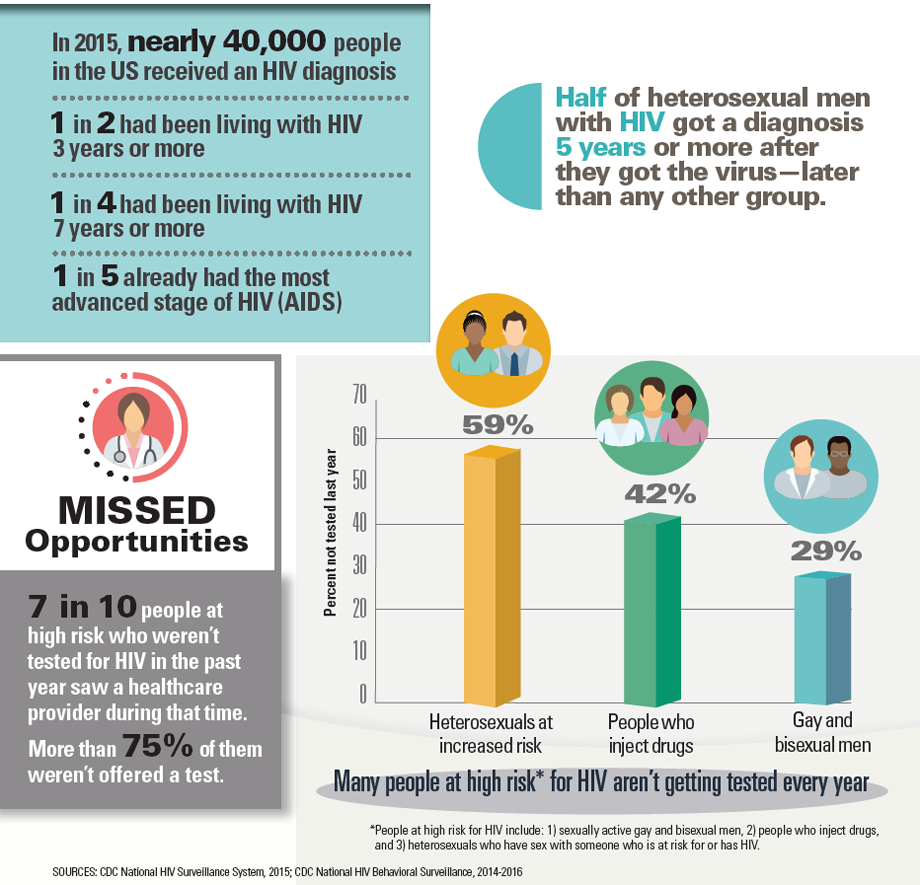How Do You Get HIV?
Transmission of HIV occurs in 3 ways:
- Sexual
- The virus spreads through semen and vaginal fluid. Unprotected oral sex, anal sex, and vaginal sex all put you at risk of infection.
- Blood
- Sharing or reusing needles for intravenous drug use. This type of transmission is not limited to “street drug” use; this includes needles used to inject hormones and steroids. Tattoos and piercings should only be done by licensed professionals using needles that have been thoroughly sterilized.
- Mother-to-Child
- HIV positive mothers can infect their babies during pregnancy, childbirth, or breastfeeding. This is called perinatal transmission, and it is the most common source of HIV/AIDS infection amongst babies and children in the US. Research has shown that the risk of perinatal transmission is reduced if HIV positive women take specialized medication during pregnancy. HIV positive women should not breastfeed, as the virus is also spread through breast milk.
If HIV is Left Untreated
One of the biggest consequences of leaving HIV/AIDS untreated is the rate at which the disease progresses from HIV to AIDS. Leaving the virus untreated allows it to do more damage at a faster rate. With proper treatment and specially developed medications, an HIV positive person is more likely to keep a higher T-cell count and live for many years without the virus progressing to AIDS. While treatment does not guarantee that a patient will not eventually become infected with AIDS, it can dramatically increase the chances of a patient’s survival.
Get Tested as part of your yearly medical check up.

The HIV Prevention Toolbox Has Grown
There are more options than ever before to reduce the risk of HIV. These include personal actions like abstinence, having only one partner with the same HIV status, and choosing less risky behaviors, as well as risk reduction tools, services, and interventions that are delivered by health care organizations. Currently available tools include:
- HIV Testing
- Medications to Prevention Transmission
- Treatment as Prevention
- Pre-Exposure Prophylaxis (PrEP)
- Post Exposure Prophylaxis (PEP)
- Improved Access to Prevention Tools
- Condom Distribution Programs
- Drug Treatment
- STD diagnosis and treatment
- Medical Male Circumcision


